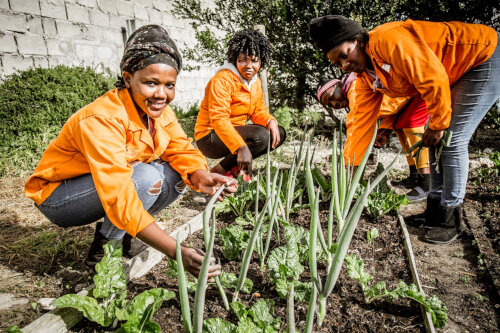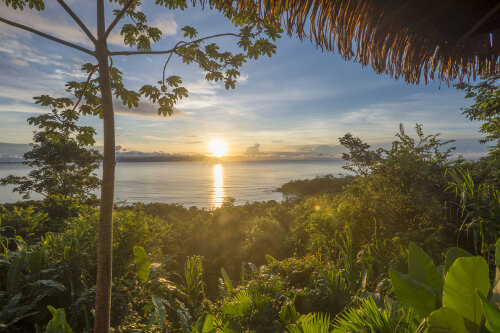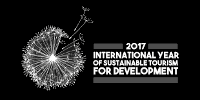Regenerative Tourism - What is it? (And What is it Not?)
/We’ve talked before about Responsible and Sustainable tourism (and various linked terms) and also Transformational, Transformative and Positive Impact tourism.
But what is Regenerative tourism? Is it just a new buzz word for the same thing? Are people just latching onto it because of coronavirus?
Regenerative Tourism – an Introduction
Regenerative tourism is certainly catching attention, especially in Covid-times although it’s been around a while. Who wouldn’t want business to evolve as a panacea and heal the decimation caused by the pandemic?
With tourism usually contributing 10% global GDP and employment, the Covid-19 shutdown is predicted to cause sector losses of 121 million jobs and $3.4 trillion (World Travel & Tourism Council, 2020).
Regenerative tourism is being touted as the smarter, greener, less-crowded post-vaccine return to tourism, to Build Back Better than the extractive industrial model of the tourism visitor economy of target growth numbers and GDP.
It defines success as more net benefit – added value, not volume, though “Regenerative tourism is not anti-growth; it simply asks that we grow the things that matter most to us in ways that benefit the entire system and never at the expense of others.” (Anna Pollock, 2019)
The Origins of Regenerative Tourism
"Regenerative" describes processes that restore, renew or revitalize their own sources of energy and materials, through the principles of living systems and nature.
“At its simplest, regeneration is about creating the fertile conditions conducive for life to thrive” – Anna Pollock, 2019.
Regenerative businesses “thrive while contributing to life-affirming futures by applying Living Systems Design, Culture and Being” (Hutchins and Storm, 2019)
Regenerative design uses whole systems thinking to create resilient and equitable systems that integrate the needs of society with the integrity of nature. (Wikipedia)
It’s not about separation and parts, but rather the sum of constantly evolving inter-dependent nested systems.
It has been influenced by approaches found in the biomimicry, ecological economics and circular economy, social movements such as permaculture, transition systems such as restorative justice, rewilding and regenerative agriculture.
It’s not about volume growth which ultimately creates negative impacts, rather ‘better’, to “create value beyond economic growth” (Elke Dens, Marketing Director of Visit Flanders via Jenny Andersson, 2019).
But it’s not about less – rather, it’s about more of the things that matter.
Regenerative agriculture describes farming practices that aim to restore soil biodiversity and sequester more carbon, and so reverse climate change and improve the water cycle. (Regeneration International) The image above shows the ‘Growing Futures” agricultural project of our partner in South Africa, which provides hospitality training, jobs and empowerment for the local community, and organic food for the lodge’s visitors many of whom visit for the ‘fynbos’ of the floral kingdom setting and conservation of the environment.
Regenerative business enriches life, ourselves, our customers and the wider stakeholder ecosystem. To materially benefit customers while damaging the fabric of life is old short-term logic that is unviable to thrive for years ahead. ‘What’s in it for me’ moves to collaboration, co-creation and contribution (Hutchins and Storm, 2019).
Regenerative culture takes a holistic approach to the wellbeing of the entire ecosystem in which humans live, creating ‘thriving’ and ‘flourishing’ communities, who as the stewards, decide what happens there.
Definition of Regenerative Tourism/Travel
Regenerative tourism is “creating the conditions for life to continuously renew itself, to transcend into new forms, and to flourish amid ever-changing life conditions” (Hutchins and Storm, 2019) - through tourism.
It sees the world as alive, not a machine – and as being part of nature’s living systems – like indigenous communities never lost.
It thus takes a holistic approach to the wellbeing of the entire tourism ecosystem in which communities live.
“Taking a holistic approach is essential in understanding positive effects (e.g. healing) as well as unintended consequences (e.g. degradation). Everything is connected, and tourism that does not respect or understand feedback loops in the system in which it operates will ultimately erode capital – and with that the wellbeing and health of the system.” (Dr. Susanne Becken, 2020)
Tourism is not just a sector, but a dynamic. Regenerative tourism recognises its communities and places are living systems, constantly interacting, evolving, self-organising, efficient, learning, distinct, and vital to create abundance, balance and conditions to support other life, resilience and contribute to a greater system of well-being.
We might say regenerative tourism management enables a place to be left better than it was found (Anna Pollock, 2019)
Going against the grain of years of tourism management and marketing to appeal to consumer demand, Regenerative tourism focuses on the supply-side, host communities and ecosystems, rather than just the visitors’ needs and wants of the market-demand approach.
The Difference of Regenerative Tourism to Responsible and Transformative Tourism
While Responsible tourism – ‘to create better places for people to live in and for people to visit’ by taking responsibility for triple bottom line impacts (planet, people, profit) - is seen as the ‘journey’ to sustainable tourism; and that that betterment doesn’t happen passively, but that it’s intended like transformative tourism; neither make explicit a connection to living systems, unlike regenerative tourism.
The Difference of Regenerative Tourism to Sustainable Tourism or Development
Sustainable tourism arguably sets a lower ‘status quo’ bar – it’s sustainable as long as it doesn’t make a place worse.
“But what if that existing structure isn’t desireable?” asks Maja Tampe in a TEDx talk, “…I say sustainability as usual is not enough to face the biggest threats we have: Climate change, biodiversity [breakdown], water scarcity”.
Regeneration goes beyond sustaining. But it’s not just about doing more good.
It also goes beyond sustainable development, which aims to satisfy fundamental human needs today without compromising the possibility of future generations to satisfy theirs, as it holistically recognises the interconnected-ness between seemingly-siloed Sustainable Development (such as perceived by some from the SDGs: Poverty, Water, Food, Health etc) and beyond (eg. culture), and to be beneficial for other species.
Regeneration is not just about incremental improvements, it’s about real systems change to a new approach. It’s about regenerating old life that is dying – like our systems which have been shown not to work - in new ways. It’s “radical – and what that really means is you’ve gone to the root of the problem” - and what’s happening at the root is a paradigm shift – our fundamental beliefs and values are changing, as much as the shift to the industrial revolution (Anna Pollock, 2020).
Regenerative tourism represents much of what Earth Changers is already about, when we talk about ‘positive impact’ tourism.
And it’s no coincidence that this comes about in the Anthropocene, the human-dominated era, and 6th extinction – as many realise what we are losing, and that our place is to be caretakers of the world, not takers.
The Difference of Regenerative Tourism to Transformational or Positive Impact Tourism
Whilst most the sector is just waking up to sustainability, having focused entirely on consumer demands, the Regenerative focus is on the supply-side, unlike more personal transformational tourism.
That said, by providing a regenerative experience, by its definition purposeful and meaningful, regenerative tourism has the capacity to transform usual daily human thinking, by seeing things differently in a different environment with businesses run in different systematic ways, like nature based on relationships, interdependencies and our interconnections, and human-ness.
In tourism, “the core source of value rests in the nature and quality of the encounter between two parties — the guest and host — that occurs in a unique setting, the place. A regenerative approach would enable that to be a rich exchange”
“In many ways its going back to the roots of the words we use: hospital-ity — make people whole again. Recreation — re-creation.” - Anna Pollock (Jenny Andersson, 2019)
So, whilst it certainly has the ‘life-changing’ transformational aspect on visitors’ lives, it is the host ecosystem that is the focus.
This is why we call what we do “positive impact tourism” – it’s positive change on purpose and a balance between supply-side needs and demand-wants: life-affirming for place, hosts and guests alike, and applies to all our Places, who already think from a living ecosystems perspective by their nature.
Funds from all our trips go back to regenerate their places and communities. Find them all in the ‘Places’ section of the website navigation. In some it’s more evident than others by way of a ‘Payment for ecosystem services’ such as in the climate-friendly REDD+ operation in Kenya, in Malawi and Tanzania).
Another highlight is in Croatia, where there is a very specific underlying focus on the energy of the ecosystem, including the locally produced organic food.
Our partner network The Long Run (including our partners in Costa Rica, Indonesia, Nicaragua, South Africa) represent this through their ‘4Cs’ approach: a balanced sustainability improvement journey for Culture, Community, Conservation and Commerce, the latter representing supply and demand; all combined representing the ecosystem.
Regenerative Tourism - Who’s talking about it?
Every sector of the economy is going through a shift towards a regenerative approach. And that means all destinations will need to consider how to foster a regenerative culture.
We require the vision to see where we want to get to, and to ask, what can tourism do to contribute to our destinations? How can we shift tourism away from the ever-increasing growth model, suffering over-tourism and looking at ways to channel volume visitors, to actually serve our communities with net benefits?
We can ask the question in principle globally, but it can only happen locally, as every place will have a unique set of responses distinct to its own culture, community and ecosystem.
Anna Pollock is a great visionary who’s done a lot of work in this area, to help develop flourishing destinations and flourishing communities. She’s recently partnered with Michelle Holliday, author of The Age of Thriveability: Vital Perspectives and Practices for a Better World.
Michelle talks about society being guided by a ‘machine story’. In tourism this is the conveyor belt of mass movement of people, often driven by national governments’ tourist boards’ targets for ever-increasing volumes of tourists, for supposed economic reasons.
They both worked with Visit Flanders on the Travel to Tomorrow summit:
The first question they asked themselves as part of their ‘Tourism Transforms’ project was “How do we shift our Visitor Economy from being extractive to regenerative in order to generate more NET value that’s social, cultural, biophysical and financial in nature?” (Anna Pollock 2019).
The change in approach, brilliantly depicted in the advert below (2 versions available, one without the voiceover), recognises places as living communities with stories and patterns of vitality and inclusivity, ‘story-weaving’ from experience fed-back on the renewing, transformative power of a trip:
In regenerative business, all are supported behind the scenes in their ability to thrive: Visit Flanders’ Holiday Participation Centre focuses on ensuring that every citizen of Flanders has the right and access to a vacation, regardless of disability or poverty. (The Age of Thriveability, 2019).
“Visit Flanders defines carrying capacity as ‘caring capacity’ and is something they actively measure” (Jenny Andersson, 2019), not considering tourist satisfaction of a destination, but rather community sentiment towards tourism. They use qualitative metrics such as civic pride.
Anna’s also worked with New Zealand’s Bay of Plenty, where she happened to be when Covid caused the shutdown of all international operations,
“We have an opportunity to stop and think seriously about how we've structured tourism so we can build a more resilient economy in the future” (Decline in International Travel Could Provide Opportunity for Tourism Reset, Newstalk ZB).
In New Zealand, indigenous knowledge and the Maori culture plays a significant role. Tikanga is a Māori concept meaning culture, custom, ethic, etiquette, fashion, formality, lore, manner, meaning, mechanism, method, protocol, style… or generally, "the Māori way of doing things". One of the core tenets of Tikanga is ‘kaitiakitanga’: guardianship or conservation, which aligns with regenerative culture which values and incorporates indigenous knowledge. In fact, New Zealand, is uniquely positioned to be led by Māori and work collaboratively and in partnership in the spirit of Te Tiriti o Waitangi - The Treaty of Waitangi, an agreement signed in 1840 between the British Crown and representatives of Māori iwi and hapū. (We Create Futures, 2020)
With Covid19, the Bay of Plenty’s strategy “Te Hā Tapoi – the Love/ Essence of Tourism” became even more relevant.
The opportunity Covid brings is to realise that previous perspectives on what tourism is may no longer be appropriate, right at the time that the Regenerative movement offers a new perspective.
Regenerative Tourism: Is it just words?
Language is important. ‘Tourism’ or even the “Visitor Economy” puts emphasis on the visitor, their spend and the ‘industry’. But what if it were called the ‘Hosting Economy” and the sector moved from ‘marketing destinations’ to focus on the “local hosting community” instead? (Michelle Holliday, The Age of Thriveability, 2019). Would that bring more respect from tourists to the sense of place?
“Thriving” and ‘flourishing’ are words applied to living systems, but never machines, which may be described as ‘performing’ or ‘productive. It’s a shift of where the focus and emphasis lies which brings different perspective, human values and value (Anna Pollock, 2019).
With the advent of the internet, tourism has lost its human connection (which Earth Changers seeks regain), to fit into database fields, algorithms and machine language.
So, as much as many see Regenerative tourism as ‘yet another term’ it’s the paradigm shift in perspective that it signifies that matters: from industrial machine, to living inter-dependent ecosystem.
Tourism & Regeneration - Measuring success
The Regenerative movement isn’t just about a shift in purpose, or a new living-systems perspective, or its vitality, but a paradigm shift which by definition needs new measurements of success. That is unlikely without a change in business model/s. (Anna Pollock, 2019)
And that is already occurring across the world, with countries looking beyond GDP measures to wellbeing:
In New Zealand, they’ve developed the Living Standards Framework, the Treasury’s perspective on what matters for New Zealanders’ wellbeing, now and into the long-term future.
Likewise, in Costa Rica, the Social Progress Index is used to measure the effects of the tourism industry on local communities – the first application of the Social Progress Index to assess the social impact of a major economic sector.
In Bhutan, they devised their Gross National Happiness statistic to replace GDP as a tool to measure progress or development. The level of GNH for an individual and for Bhutan as a country are determined through measures in nine domains all based all based on well-being.
And in Amsterdam in the Netherlands, they’ve embraced ‘Doughnut Economics’ to plan how the city will rebuild in a post-Covid-19 world, as a “breakthrough alternative to growth economics” (George Monbiot). The inside ring represents minimum living standards derived from the UN Sustainable Development Goals and the outer ring, the ecological boundaries the world needs to work to (but is currently exceeding): The dough between the two is where we need to live: where economic activity meets the core needs of all but within the means of the planet. In April 2020 it was formally embraced by Amsterdam as the starting point for public policy decisions, the first city in the world to make such a commitment.
Regenerative Tourism - A Round-Up
Ultimately, “regenerative tourism happens at the community level and needs to go beyond [such] top-down regulatory interventions” (Dr. Susanne Becken, 2020).
With international tourism shutdown, economic situations are dire for many communities without tourism, but many residents were previously fed up with visitors, not feeling like their own places belonged to themselves any more. Now is the time to reorient the sector to a more sustainable, resilient path, whilst building back better from Covid, so it’s good for all.
It’s not just a new tourism term, rather tourism is part of a larger regenerative movement across sectors and the world, returning to connections with each other, community and nature, all of which we have appreciated more greatly during the coronavirus pandemic.
In short, the movement is there, the desire is there, the need is there and the opportunity is there - for tourism to contribute to local (and national) well-being and prosperity.
Regenerative tourism is very much represented by Earth Changers, our philosopy, values (adventure, connection and integrity) and partners. The name kind of says it already ;)
Read more:






















